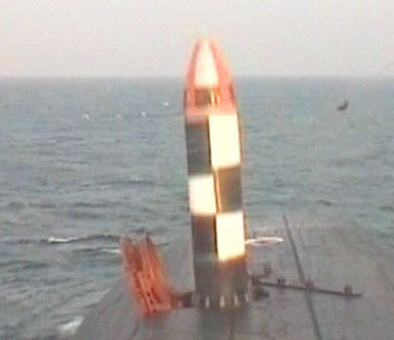
Russia is set to resume this week the flight testing of its (RSM-56) Bulava Submarine Launched Ballistic Missile (SLBM) system (NATO code name SS-NX-30). According to a Russian Defense Ministry source quoted by Novosti, the next launch is scheduled for June 28, two weeks after the original ‘window’ announced for the flight. The upcoming test was approved by the State Commission for Flight Testing on Saturday June 25. Previous launches were conducted from the Borey surrogate submarine Dmitry Donskoy, but according to the latest information, the launching platform for this test will be the first Borey Class, Bulava equipped submarine, Yuri Dolgoruky, which already deployed to the Barents Sea. This submarine has recently completed sea trials in the White Sea, and is expected to enter service with the Russian Navy in the near future, pending the outcome of the Bulava testing. The current test campaign is planned to include four launches this year, leading to deployment on the new Borey class strategic missile carrying submarine.

Top brass of the Russian strategic forces have insisted that the program should be continued despite repeated launch failures, claiming the Bulava is the only successor for current missiles, and that the system should continue its tests through full and satisfactory completion of the program. In the last test in late October 2010, two Bulava missile were successfully test-fired from the Dmitry Donskoi in the White Sea, hitting a target on a test range in Russia’s Far East Kamchatka region some 6,000 kilometers to the east. Prior to this test, the program was plagued by repeated failures.
Proving the missile’s reliability is expected to be the last phase of the development program, before the Multiple Independently targetable Reentry Vehicle (MIRV) warheads are integrated with the missile. The production of these warheads has already been completed. When it will be announced operational the Bulava will be capable of attacking targets at ranges of 8,000 kilometers (5,000 miles) with up to 10 MIRV warheads. The Russian military expects the Bulava, along with Topol-M land-based ballistic missiles, to become the core of its nuclear triad.

According to Deputy Prime Minister Sergei Ivanov, a missile production plant in southern Siberia has produced enough Bulava ballistic missiles to complete its tests and arm the Yury Dolgoruky, the first Borey class strategic submarine. Three other Borey class nuclear submarines, the Alexander Nevsky, the Vladimir Monomakh, and Svyatitel Nikolai (St. Nicholas) are in different stages of completion. Russia is planning to build eight of these subs by 2015.
Earlier this year the Russian Prime Minister Vladimir Putin said that Russia plans to double the production of ballistic missiles after 2013. According to Ivanov, Russia will invest 77 billion rubles ($2.6 bln) in the production of ballistic missiles in the next ten years, through a ballistic missile production holding will be set up with the participation of Russia’s Federal Space Agency. The holding will include the Moscow Institute of Thermal Technology, which designed the Topol and Bulava missiles.
















